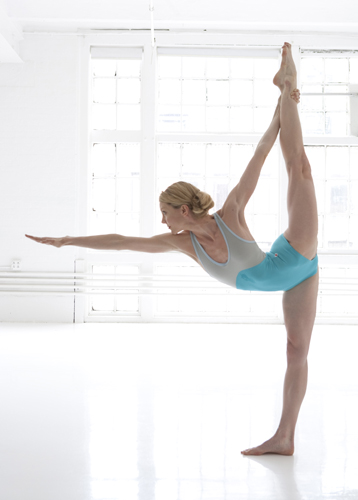by Barbora Simek
Balancing Stick
Tuladandasana
One of the most invigorating and challenging postures in the Bikram Yoga series, balancing stick is a hugely beneficial to the internal organs and as a large calorie burner, helps to tone the entire body. Like standing head-to-knee and standing bow-pulling pose, bringing the chest parallel to the floor helps to stimulate and strengthen heart giving huge cardiovascular benefit. Finally, it requires extreme concentration and helps to release emotion and open the heart.
Anatomical Focus
Strengthens
- Upper Thighs
- Buttocks
- Shoulders
- Abdomen
- Trapezius Muscles
- Deltoids
- Ankles
Stretches
- Hip Joints
- Shoulders
- Full Stretch of the spine
Stimulates
- Pancreas
- Liver
- Spleen
- Kidneys
- Nervous System
Physical Benefits
Improves balance
Increases endurance
Increases lung capacity
Stimulates the heart and arteries, strengthening the heart
Helps to clear blockages from arteries helping to prevent future cardiovascular problems
Helps varicose veins
Burns fat (up to 300 calories during the posture according to Rajishree Choudhury)
Slims waistline and eliminates deposits fat on the body
Relieves tension from the spine
Energetic Benefits
Activates and opens the heart chackra
Mental Benefits
Improves memory and concentration
Emotional Benefits
Releases doubt and fear of giving and receiving love (by activating the heart chackra)
Allows you to open yourself to love and soul expression
Posture Tips
BREATHE This is especially important because you are working the cardiovascular system which is aided by the respiratory system
SUCK YOUR STOMACH IN, using the abdominal muscles in this posture will stabilize your core and will ultimately help you to balance in the posture.
Point your toes from beginning. After you step forward and before you bring your body down, lift your back leg one inch off the floor, and point your toes.
Improvement in balancing stick will help your locust pose and vice versa.
Tips from the Pros
The set up determines how well you will do the posture, lock everything before (knees, elbows, etc) so that you will have more stability in the posture – Craig
Lean back slightly in the set up to stretch the chest as you step into the posture – Craig
Come down absolutely straight, and use your strength immediately – Bikram
Use your eyes to continue the stretch of the spine, the spine stays straight but the eyes look forward – Craig
At the end of the posture stretch forward a little more than you stretch back – Craig
Check out more posture tips from Bikram Yoga NYC here
Tips for Teachers
Keep the set up in a regularly paced tone, once the student is in the posture make the dialogue more energetic – Craig
“Sound is almost the same as solid matter. Voice and volume is tangible.” Craig Villani
Because of the intensity of the posture, you must increase your vocal energy and intensity to help the students complete and endure through the pose.
Put emphasis on stretching forward. Before coming to the repetition of ‘stretch, stretch, stretch’ at the end of the pose, make sure the final instruction is to stretch forward. – Craig
Correcting the alignment of the hips is a correction for intermediate and advanced students only, not for beginners – Craig
Share this article with your friends by clicking on the icons below…














